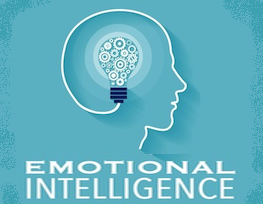
Embodied Wisdom: The Path to Emotional Intelligence
How Emotional Intelligence Grows Through Embodied Experience

How Emotional Intelligence Grows Through Embodied Experience
When we speak of emotional intelligence (EI), we’re speaking of something that extends far beyond a skill set or personality trait. It’s the ability to recognize, understand, and work skillfully with our emotions, while also perceiving and responding to the emotions of others. In many ways, it is the art of being fully human.
Culturally we are taught intelligence is something measured in books, ideas, or the sharpness of thought. However, I propose that the most meaningful growth comes not from what we know, but from how we relate: to ourselves, to others, and to the larger field of life. Emotional intelligence is at the center of this discovery. It asks us to slow down enough to notice what is moving inside us, joy, grief, frustration, wonder, and to respond with clarity rather than reactivity.
Developing emotional intelligence is not just about being “in control” of emotions. In fact, it’s the opposite of control in the rigid sense. It’s about cultivating presence. It’s learning to listen inwardly with compassion and to allow emotions to teach us rather than overwhelm us. This is the foundation of self-awareness, the first pillar of emotional intelligence.
The second pillar, self-regulation, grows naturally from this awareness. When we recognize our emotions as part of the flow of life, we can respond rather than react. We discover resilience, patience, and the ability to stay grounded even in difficult situations.
From there, empathy and social awareness emerge. The more attuned we become to our own emotional landscape, the more capable we are of sensing the subtle cues in others—the tone of a voice, the shift of breath, the quiet signals that often say more than words. Emotional intelligence becomes not just an inner practice, but a bridge to deeper relationships.
And finally, EI is also about integration, aligning our actions and choices with values such as compassion, respect, and authenticity. In this way, it supports both personal growth and collective harmony.
This brings me to the practice of Ritual Postures, which I have found to be one of the most profound ways of cultivating emotional intelligence. Unlike cognitive exercises that ask us to “think” about our emotions, Ritual Postures invite us to enter the body and listen deeply from within.
Through these postures, we engage altered states of consciousness that awaken layers of self-awareness often hidden beneath everyday distractions. In these states, emotions are not obstacles to be managed, they are messengers. They point toward deeper truths about our needs, our values, and our place in the web of life.
Practitioners often discover a heightened sense of empathy and receptivity, as if the practice tunes the body to perceive the emotional “music” around us with greater clarity. This embodied wisdom fosters not only resilience but also compassion. It teaches us that to be fully human is to be both vulnerable and connected.
There is a reciprocal relationship here worth noting. As Ritual Postures deepen emotional intelligence, emotional intelligence itself becomes a gateway to spiritual practice. The more skillfully we can meet our emotions with awareness, the more open we are to experiences of transcendence, connection, and expanded states of consciousness.
In this sense, EI is not only a tool for navigating everyday life, it is also a foundation for spiritual exploration. It allows us to approach the mysteries of existence with an open heart, to align with higher values, and to feel our belonging within the vast living universe.
“Emotions are not obstacles to overcome; they are messengers guiding us toward deeper truths.”
Paul Robear Tweet